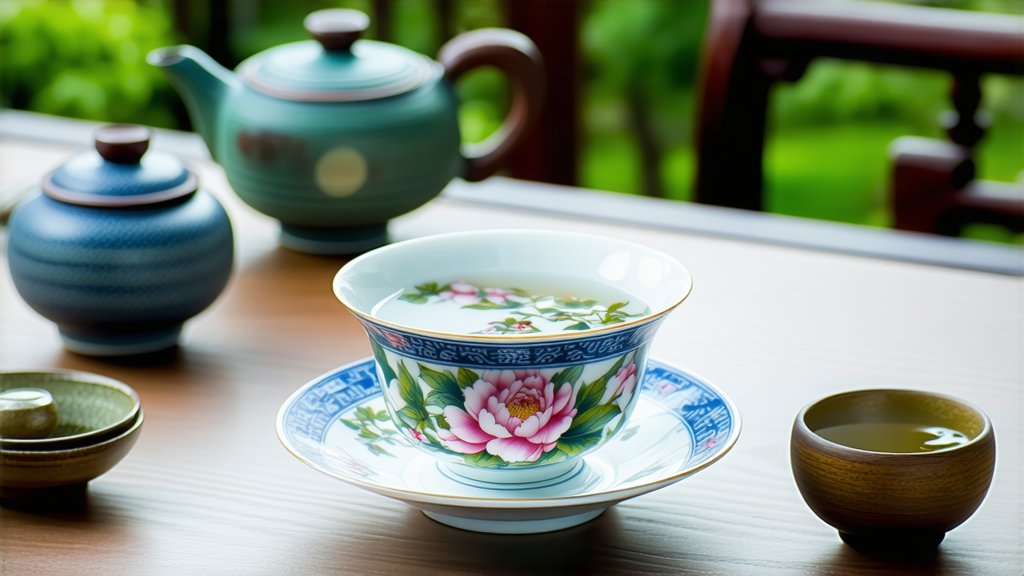
White Peony Tea, also known as "Bai Mudan" in Mandarin, is one of the most revered and distinctive varieties within the realm of Chinese white teas. This exquisite tea originates from the lush mountains of Fujian Province, where its unique terroir and climate contribute to its unparalleled quality and flavor profile. In this comprehensive exploration, we delve into the rich history, diverse types, intricate production process, and nuanced art of appreciating White Peony Tea.
History and Origins
The story of White Peony Tea traces back over 200 years to the Qing Dynasty, making it a relatively young yet significant member of the Chinese tea family. It was during this period that tea masters in Fujian Province discovered the delicate beauty of lightly oxidized tea leaves, which would eventually be classified as white tea. Bai Mudan, meaning "White Peony," derives its name from the resemblance of its buds and leaves to the petals and stamens of a peony flower when they unfurl during brewing. Over time, this tea has become synonymous with purity, elegance, and the artistry of Chinese tea culture.
Types of White Peony Tea
White Peony Tea is primarily categorized based on the maturity and proportion of buds to leaves in each harvest. The two main types are:
-
Shou Mei (Premium Grade): Shou Mei consists solely of tender buds, devoid of any mature leaves. This grade represents the pinnacle of Bai Mudan's refinement, offering a more subtle and refined flavor profile with a silky texture. It is considered the finest and most prized among all white teas.
-
Gong Mei (Royal Grade): Gong Mei includes both buds and one or two accompanying leaves. This grade strikes a balance between flavor complexity and accessibility, making it a popular choice for both connoisseurs and casual drinkers alike. Its aroma is slightly more robust compared to Shou Mei, with a fuller body and a hint of sweetness.
Each type embodies the essence of springtime freshness, capturing the first flush of the season when the tea plants awaken from their winter dormancy, producing leaves imbued with a higher concentration of amino acids and polyphenols.
Production Process
The craftsmanship behind White Peony Tea is a testament to the meticulous attention to detail inherent in traditional Chinese tea-making practices. The process begins with careful handpicking of only the youngest shoots, typically in early spring when the weather is cool and damp, fostering optimal growth conditions for the tea plants.
Once harvested, the freshly picked leaves undergo a series of gentle steps:
-
Withering: The leaves are spread out thinly on bamboo trays under the sun or indoors in a well-ventilated area to slowly lose moisture. This step allows the leaves to soften while preserving their natural green color and enhancing their aromatic compounds.
-
Fixation: After partial withering, the leaves are briefly exposed to high heat in a wok or steamed to halt enzymatic activity and prevent further oxidation. This crucial step sets the foundation for Bai Mudan's characteristic light yellow liquor and preserves its delicate flavors.
-
Shaking and Drying: The fixed leaves are gently tossed or shaken to separate them and facilitate uniform drying. They are then spread out again to air dry or baked at low temperatures until they reach the desired level of moisture content.
Throughout this minimalist processing method, great care is taken to maintain the integrity of the tea's natural qualities, resulting in a product that exudes freshness and vitality.
Tea Tasting: Appreciating White Peony Tea
To truly appreciate White Peony Tea, one must engage in the ritualistic practice of tea tasting, or "Cha Dao" as it is called in Chinese. This multisensory experience encompasses not just the act of drinking but also observing, inhaling, and feeling the tea. Here are some guidelines for an authentic Bai Mudan tasting session:
-
Preparation: Begin by selecting a clean, transparent glass or porcelain teapot and cups to allow for visual appreciation of the tea's color and unfurling leaves. Use water heated to approximately 80°C (175°F) to avoid scalding the delicate leaves.
-
Infusion: Place about 3-5 grams of loose leaf Bai Mudan per 200ml of water. Steep for 1-2 minutes for the initial infusion, allowing subsequent steepings to increase gradually in duration. Bai Mudan can be steeped multiple times, revealing different facets of its flavor profile with each brew.
-
Observation: Admire the transformation of the tightly rolled buds and leaves as they rehydrate and dance gracefully in the water, resembling blooming flowers. Note the pale golden hue of the liquor, which signifies the tea's purity and light oxidation.
-
Aroma: Bring the cup close to your nose and take slow, deep inhalations to detect the tea's subtle fragrances. Fresh Bai Mudan often exhibits notes of dried fruit, honey, and a hint of floral sweetness, reminiscent of its namesake peony blossom.
-
Tasting: Take small sips, allowing the liquid to coat your palate fully before swallowing. Pay attention to the tea's smoothness, sweetness, and slight vegetal undertones. The finish should be clean, leaving a refreshing aftertaste that lingers pleasantly.
-
Feeling: Observe how the tea feels in your mouth—its texture should be silky and almost creamy due to its high content of amino acids. The overall experience should evoke a sense of tranquility and harmony, reflecting the tea's connection to nature and tradition.
In conclusion, White Peony Tea stands as a shining example of China's profound tea heritage, embodying simplicity, elegance, and the art of living in harmony with nature. From its storied past to its meticulous production and sophisticated tasting rituals, every aspect of Bai Mudan invites us to slow down, savor the moment, and appreciate the finer nuances of life. Whether you're a seasoned tea enthusiast or a curious newcomer, exploring the world of White Peony Tea promises a journey filled with discovery, delight, and a deeper understanding of one of humanity's oldest and most cherished traditions.